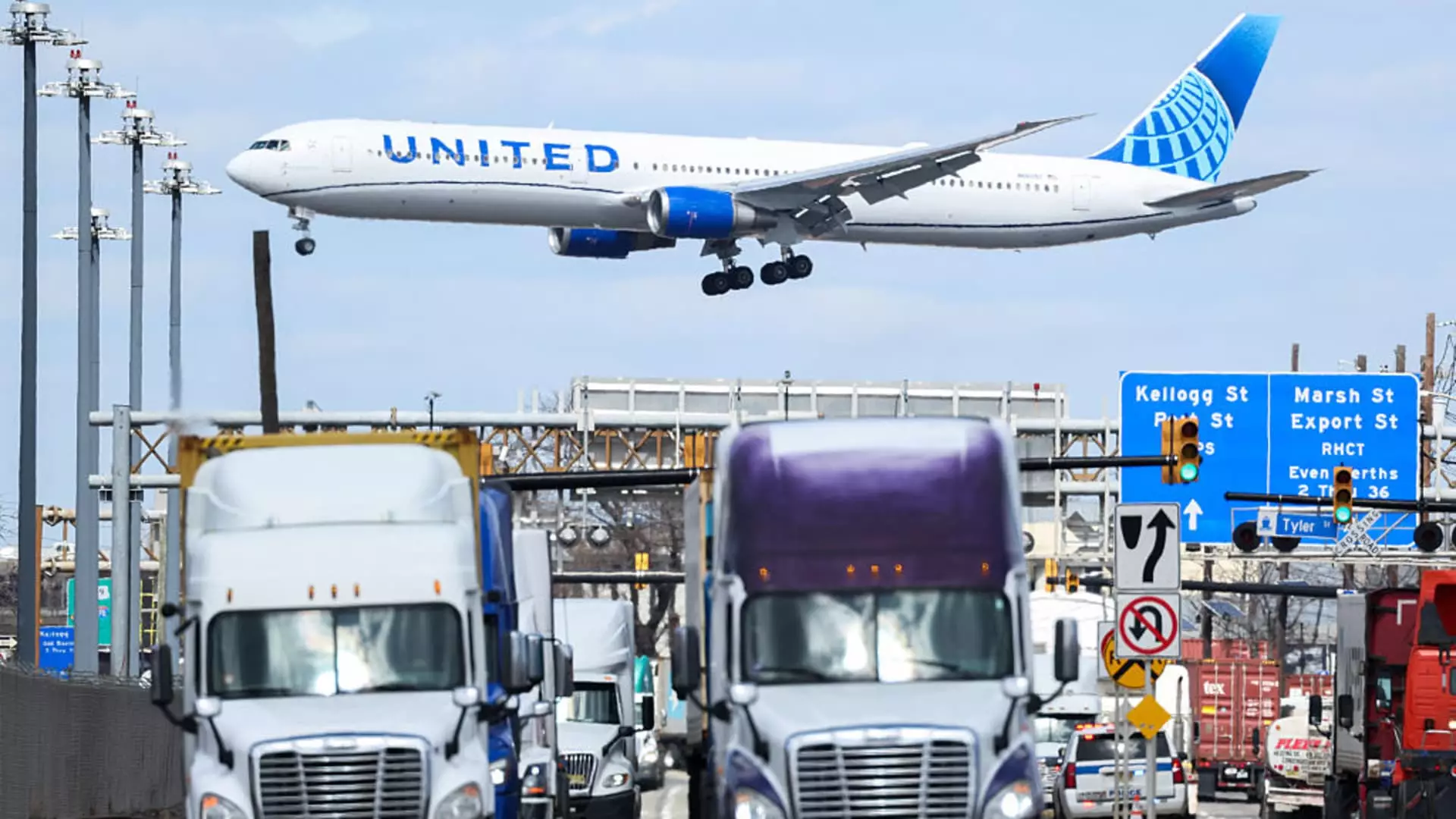United Airlines recently stood firm on its full-year forecasts even as it acknowledged the precariousness of the current economic landscape in the U.S. This assertive move is not only unusual but somewhat ominous, suggesting that the airline is bracing for turbulence ahead. The uncertainty surrounding economic fluctuations comes at a sensitive time where consumer confidence hangs in the balance, leading corporate entities like United Airlines to craft dual forecasting models — one for normal conditions and another in the eventuality of a recession. This stratagem appears to reflect an apprehension that runs deeper than mere caution.
United Airlines stated its expected earnings per share (EPS) would range from $11.50 to $13.50, yet it conceded that a broader economic downturn could depress those figures, anticipating an adjusted EPS between $7 and $9. The fact that a profitable outlook is still projected amid recessionary signals raises intriguing questions about the airline’s long-term viability as it navigates economic distress. The inconsistency in airline profitability didn’t escape scrutiny, especially with the declaration that the macroeconomic environment remains “impossible to predict.” What does it say about our economic indicators when a leading company feels it cannot project with confidence? This should indeed raise alarms among investors.
Traffic Trends: A Tale of Two Markets
United’s bifurcated approach to its traffic and operational strategy—cutting domestic flights while leaning into international routes—demonstrates its recognition of evolving consumer behaviors in the travel sector. As domestic travel demand declines, the airline is opting to trim its capacity by approximately 4% in the third quarter, attempting to manage operational costs around disappointing domestic bookings. Meanwhile, international travel remains robust, particularly in premium cabins, where there has been a notable 17% surge in bookings. It’s a clear dividing line: the economy-class traveler is tightening their belt while the affluent consumer seeks comfort and luxury.
What remains particularly noteworthy is how this bifurcation leads to questions regarding the sustainability of consensual growth. Will this be a short-lived trend, or will affluent travelers keep propping up the airline’s bottom line? And at what point does the airline pivot away from demographic reliance? These are critical decisions that will define United’s future amid volatile market sentiments.
Profit Margins versus Economic Perils
With a reported first-quarter profit of $387 million—up from a previous loss of $124 million—the statistics sound impressive at first glance. However, analysts note that while adjusted earnings exceeded expectations, the decrease of 3.9% in unit revenue for domestic flights raises eyebrows. Conversely, a 5% uptick in international unit sales can bolster morale somewhat, but the real question remains: are these figures part of a healthy recovery, or are they symptomatic of larger systemic issues?
While rival airlines like Delta Air Lines also tempered their growth plans, United remains committed to a strategic multi-year plan, one that reportedly has led to “industry-leading margins.” The optimistic outlook from CEO Scott Kirby is commendable but raises the specter of overconfidence. The extent of profitability can be deceptive if the market starts to constrict; the apparent resiliency of the airline may just be the calm before an impending storm.
Future Booking Trends: A Silver Lining or Wishful Thinking?
Future bookings reflect an encouraging stability, with significant growth in premium product lines and international travel demand. Yet, without concrete numbers on domestic coach-cabin demand, the overall narrative feels incomplete. The airline industry thrives on patterns, and without a thorough understanding of consumer sentiment towards domestic travel, United risks missing a crucial segment of their customer base.
While the revenue from international routes paints a hopeful picture, the reliance on high-end travelers may prove to be a double-edged sword. The economic landscape can shift rapidly, and a substantial downturn could diminish disposable income for luxury travel. Is United Airlines too dependent on an affluent demographic, a potential vulnerability in times of economic retreat?
While United Airlines unveils impressive metrics and optimistic forecasts, one cannot shake the feeling that these projections are underlining growing contradictions in the market. The narrative is one that conjoins opportunity with immense risk, and as consumers navigate a tangled web of economic uncertainty, United Airlines must tread carefully if it hopes to sustain its profitability.

